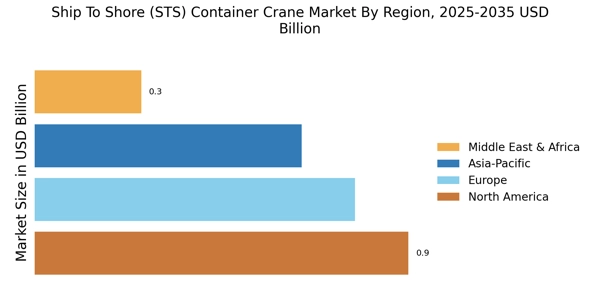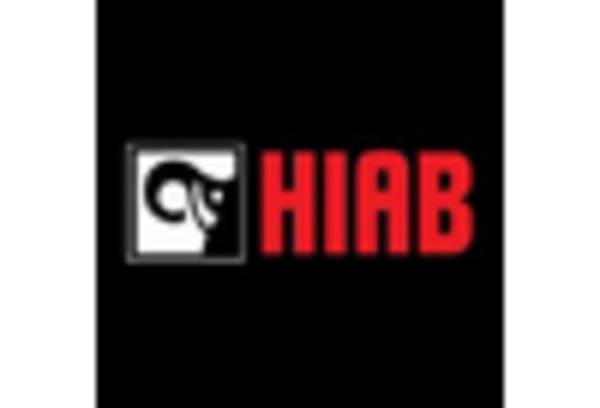Environmental Regulations
The Ship To Shore (STS) Container Crane Market is influenced by stringent environmental regulations aimed at reducing emissions and promoting sustainability. Governments worldwide are implementing policies that require ports to adopt greener technologies and practices. This has led to a growing demand for eco-friendly STS cranes that utilize electric or hybrid power sources, thereby minimizing their carbon footprint. Additionally, the focus on reducing noise pollution has prompted manufacturers to develop quieter crane models. As ports strive to comply with these regulations, investments in environmentally friendly crane technologies are likely to increase. This trend not only aligns with global sustainability goals but also enhances the competitiveness of ports in attracting shipping lines that prioritize environmental responsibility.
Technological Advancements
Technological advancements play a pivotal role in shaping the Ship To Shore (STS) Container Crane Market. Innovations such as automation, remote control, and smart technologies are transforming crane operations, enhancing efficiency and safety. The integration of Internet of Things (IoT) devices allows for real-time monitoring and predictive maintenance, reducing downtime and operational costs. Furthermore, advancements in crane design and materials have led to lighter, more durable structures that can handle larger containers. As ports increasingly adopt these technologies, the demand for modern STS cranes is expected to rise. Industry reports indicate that the market for automated STS cranes is anticipated to grow significantly, reflecting the industry's shift towards more sophisticated and efficient handling solutions.
Increasing Container Traffic
The Ship To Shore (STS) Container Crane Market is experiencing a notable surge in container traffic, driven by the expansion of international trade and e-commerce. As global supply chains become more interconnected, ports are witnessing an increase in container throughput. According to recent data, container traffic is projected to grow at a compound annual growth rate of approximately 4.5% over the next few years. This growth necessitates the deployment of advanced STS cranes to efficiently handle the rising volume of containers. Ports are investing in modernizing their infrastructure, which includes upgrading existing cranes and acquiring new ones to enhance operational efficiency. Consequently, the demand for STS cranes is likely to rise, as ports seek to optimize their operations and reduce turnaround times, thereby improving overall productivity.
Port Infrastructure Development
The Ship To Shore (STS) Container Crane Market is significantly impacted by ongoing port infrastructure development projects. Many countries are investing heavily in expanding and modernizing their port facilities to accommodate larger vessels and increased cargo volumes. This includes the construction of new terminals and the upgrading of existing ones, which often involves the installation of advanced STS cranes. For instance, several major ports are undergoing expansion projects that include the addition of new berths and the enhancement of cargo handling capabilities. As these infrastructure projects progress, the demand for STS cranes is expected to rise, as ports seek to improve their operational efficiency and competitiveness in The Ship To Shore (STS) Container Crane.
Rising Demand for Efficient Logistics
The Ship To Shore (STS) Container Crane Market is driven by the rising demand for efficient logistics and supply chain management. As businesses seek to optimize their operations, the need for faster and more reliable cargo handling solutions has become paramount. Efficient logistics not only reduces costs but also enhances customer satisfaction by ensuring timely deliveries. Consequently, ports are increasingly investing in advanced STS cranes that can handle higher volumes of containers with greater speed and accuracy. The trend towards just-in-time inventory management further emphasizes the need for efficient crane operations. As logistics companies and shipping lines prioritize efficiency, the demand for state-of-the-art STS cranes is likely to grow, reflecting the industry's response to evolving market needs.


















Leave a Comment